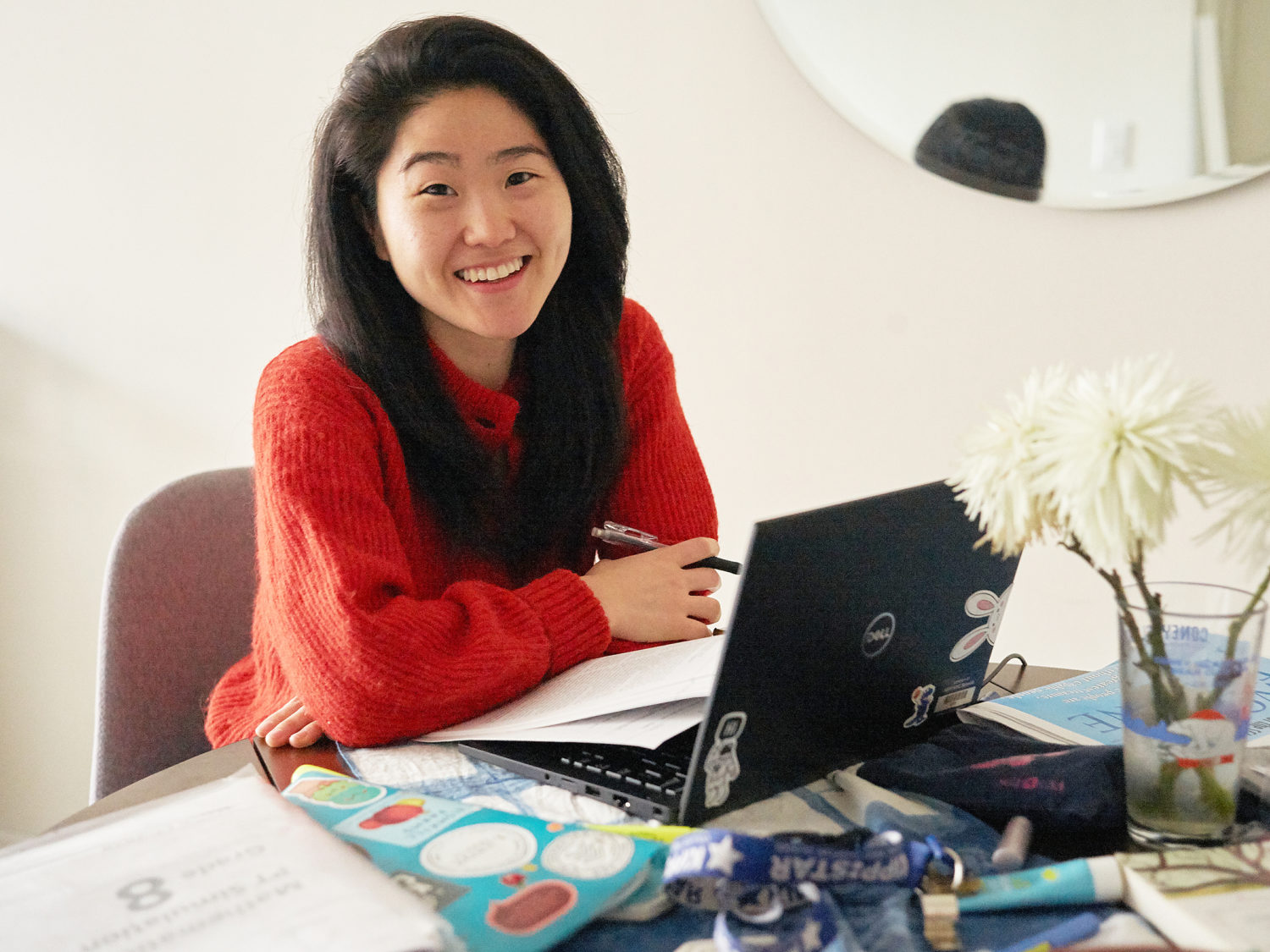by Ai Nishino
New York
I began to practice Buddhism seriously for the first time in 2015, when I found myself struggling as a third-year, middle school math teacher. I couldn’t complete my lessons on time or get my students to stay seated or listen in class. I would get angry and raise my voice at them, but nothing changed. I didn’t like the person I was becoming.
I began chanting Nam-myoho-renge-kyo, at first, for my students to follow directions. But a friend in faith reminded me to be grateful for the people who challenge us the most, because they are the ones who enable us to do our human revolution—to recognize, face and transform our negative tendencies. I realized that I needed to challenge my angry nature and build confidence as an educator.
I read SGI President Ikeda’s guidance from volume one of The New Human Revolution, which states: “Nichiren Buddhism … enables us to transform the place where we are now into ‘a land of Eternally Tranquil Light’ and there construct a palace of happiness. To that end, you have to change the karma that makes you suffer. … There is no other way than to dramatically transform your own life condition. When you change your state of life, your environment will naturally start changing as well. This is the principle of the oneness of life and its environment” (The New Human Revolution, vol. 1, p. 43).
From then on, I focused on raising my own life condition and chanted for my students to be happy and empowered. As I came to see them in their entirety as human beings, with their own complex emotions, I began to be concerned, first and foremost, with their welfare. I would check in to see how they were doing, and when I felt myself getting angry, I would ask myself: How can I create value in this moment?
As my practice deepened, I studied about the concept of the oneness of mentor and disciple, and came across this passage from Sensei: “The life of a mentor of kosen-rufu pulses with the vast life state of a Bodhisattva of the Earth, dedicated to helping all living beings create happiness. When we engage in our struggles with a resolve to support our mentor’s goals, our life resonates with that of our mentor and our state of being expands” (NHR-24, 255).
When I chanted about how I could contribute to my mentor’s dream of kosen-rufu, I felt the confidence to dream big: I wanted to change the landscape of public education in this country so that all students could receive an excellent education that empowers them to become absolutely happy.
Concretely, this meant that I needed to first overcome my feelings of incapability as a teacher. I began 2019 determined to do just this.
Years earlier, I had learned about a national award for excellence in teaching, given to 10 out of 7,000 teachers annually within our nationwide network of charter schools. I dreamed of getting this award, but I believed that I would never be one of them. This time, however, my motivation was different.
I began chanting to become indispensable at work to show the greatness of this practice. Just a few months later, in mid 2019, I received the national award for improving students’ academic performance in an underserved community.
For the first time, I saw my capability and realized that my life was limitless. As an expression of my appreciation, I contributed part of the monetary award to the SGI-USA during last year’s May Commemorative Contribution Activity, enabling me to achieve my personal goal.
At the beginning of the 2019-2020 school year, I found myself having to dig even deeper into my human revolution when some of my own students directed racial slurs at me in the classroom. Completely taken aback, I felt my angry nature take over. Even though these students were in my class every day, I resolved never to talk to them.
But as I chanted to create value, I was ultimately reminded of a fundamental principle of our Buddhist practice—engaging in one-to-one dialogue.
I decided to have lunch with every student on a weekly basis for a month to get to know them, not just as students but as human beings. These lunches became the most incredible part of my week, because I truly felt the power of dialogue and its ability to create understanding and trust between people who have experienced life from very different perspectives.
I came to truly care about each student and wanted them to succeed. This change of heart transformed my classroom.
Because of the COVID-19 pandemic, our school has transitioned to online learning. I miss my students, but I remain focused on the “C” of the A-B-C Campaign:[1] to connect even more deeply with them heart to heart.
I am excited once again to challenge May Contribution this year as an expedient means to do my human revolution and deepen my humanity. I want to experience even more deeply what it means to construct “a palace of happiness” for myself and others.
References
- In response to the COVID-19 pandemic, the SGI-USA initiated the A-B-C Campaign. A: Abundant daimoku; B: Buddhist study; C: Connect life to life with members, guests and family (using the phone or video conferencing). ↩︎
You are reading {{ meterCount }} of {{ meterMax }} free premium articles

